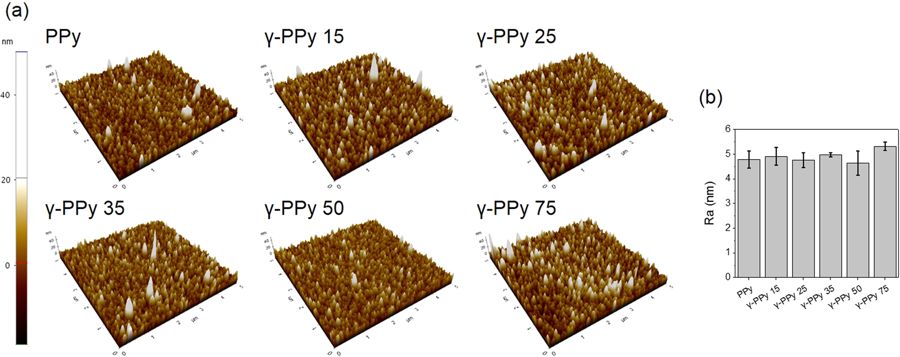In the article “A Short Peptide Hydrogel with High Stiffness Induced by 310‐Helices to β‐Sheet Transition in Water” by Shu Hui Hiew, Harini Mohanram, Lulu Ning, Jingjing Guo, Antoni Sánchez‐Ferrer, Xiangyan Shi, Konstantin Pervushin, Yuguang Mu, Raffaele Mezzenga and Ali Miserez, a short biomimetic peptide composed of eight amino acid residues derived from squid sucker ring teeth proteins is demonstrated to form hydrogel in water without any cross‐linking agent or chemical modification and exhibits a stiffness on par with the stiffest peptide hydrogels.
Their study broadens the range of secondary structures available to create supramolecular hydrogels, and introduces 310‐helices as transient building blocks for gelation via a 310‐to‐β‐sheet conformational transition.*
The AFM images presented in this study were obtained in soft tapping mode using NanoWorld Pointprobe® NCSTR AFM probes.

310‐ Helices to β‐Sheet Transition in Water” by Shu Hui Hiew et al.
Structural features and physico‐chemical properties of GV8 peptide hydrogel observed with time‐series spectroscopy measurements during gelation
b) AFM amplitude profile of dried GV8 hydrogel with fibers of ≈6–10 nm height.
*Shu Hui Hiew, Harini Mohanram, Lulu Ning, Jingjing Guo, Antoni Sánchez‐Ferrer, Xiangyan Shi, Konstantin Pervushin, Yuguang Mu, Raffaele Mezzenga, Ali Miserez
A Short Peptide Hydrogel with High Stiffness Induced by 310‐Helices to β‐Sheet Transition in Water
Advanced Science 2019, 1901173
Doi: https://doi.org/10.1002/advs.201901173
Please follow this external link to read the full article: https://onlinelibrary.wiley.com/doi/full/10.1002/advs.201901173
Open Access: The article « A Short Peptide Hydrogel with High Stiffness Induced by 310‐Helices to β‐Sheet Transition in Water » ” by Shu Hui Hiew, Harini Mohanram, Lulu Ning, Jingjing Guo, Antoni Sánchez‐Ferrer, Xiangyan Shi, Konstantin Pervushin, Yuguang Mu, Raffaele Mezzenga and Ali Miserez is licensed under a Creative Commons Attribution 4.0 International License, which permits use, sharing, adaptation, distribution and reproduction in any medium or format, as long as you give appropriate credit to the original author(s) and the source, provide a link to the Creative Commons license, and indicate if changes were made. The images or other thirdparty material in this article are included in the article’s Creative Commons license, unless indicated otherwise in a credit line to the material. If material is not included in the article’s Creative Commons license and your intended use is not permitted by statutory regulation or exceeds the permitted use, you will need to obtain permission directly from the copyright holder. To view a copy of this license, visit http://creativecommons.org/licenses/by/4.0/.

